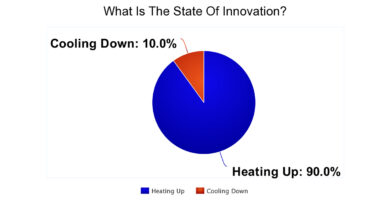Are Lenders Getting What They Pay For With Sales Compensation?
With the cost to originate a mortgage at an all-time high, it’s time for lenders to revisit their compensation plans. That’s the conclusion STRATMOR Group Senior Partner Garth Graham reaches in his article in the July issue of STRATMOR’s monthly Insights Report entitled, “Sales Compensation: Do You Get What You Pay For?” in which Graham charts a workable path forward.
“Invariably, the first thing I hear when the high cost to originate comes up is a promise to cut costs … in the back office,” Graham says. “Loan fulfillment — processing, underwriting, closing and other direct costs to manufacture the loan — costs the average lender about 22% of their cost to originate. Nonetheless, this is where the industry has traditionally gone to cut costs. Meanwhile, 55% of their expenses are on the sales side.”
According to STRATMOR’s Compensation Connection® Study, the most common compensation structures in place today pay basis points (bps) of the loan amount rather than flat dollars per loan. But Graham questions whether this is really aligned with mortgage lenders’ goals.
And Graham understands compensation from an LO’s point of view: he started his career as an LO more than 30 years ago.
After the Dodd-Frank Act passed in 2010, the only term lenders could use to base compensation on was the loan amount. Without that, the industry would have likely paid based on unit production. In 2010, the average bps payment structure generated a loan officer (LO) commission of $1,672 per loan. Currently, it’s doubled to $3,194 per loan.
Graham suggests that basing compensation on a fixed rate and then adjusting it for certain elements may make more sense. For example, lenders could consider paying less for refinance loans and more for a high customer satisfaction score. Or, bonuses could be tied to repeat customers, average pull-through, and better loan files going into underwriting.
“Many of these compensation structures are ignored in most plans today because the only thing we focus on is the loan amount,” Graham says. “How can we expect our sales professionals to give us what we need to grow stronger businesses if it’s not built into their comp plans?”
Graham says it’s understandable that lenders may be hesitant about changes that could cost them their top originators. He says there are reasons lenders may not want to approach this issue, but he maintains that the leading companies will.
“If the lender is free to take other factors into consideration, it naturally opens up a discussion of the lender’s overall costs. With profitability in the tank and volume down, this is the perfect time for that analysis,” Graham says. “Make your changes now and make sure they benefit your institution over the long haul by paying for behaviors you want to see out of your professional sales staff.”
Graham offers lenders two places to start: the consumer direct channel and new LOs coming into the business. The former is down so much in the current environment that any changes made would almost go unnoticed but still have a huge impact on their business when the market comes back.
A lender could also start by leaving their veteran originators on their existing comp plan and change it for the new rookies that are hired. “As the older generation ages out, they can pass their wisdom along to the younger LOs, who can then carry on under the new comp plan,” Graham says.
As for new LOs, they have no experience with any other kind of compensation plan, so the changes will mean nothing to them, he says. If the lender assures experienced loan officers that the changes won’t affect them, they may be more likely to help the new LOs come up to speed.

The Place for Lending Visionaries and Thought Leaders. We take you beyond the latest news and trends to help you grow your lending business.



